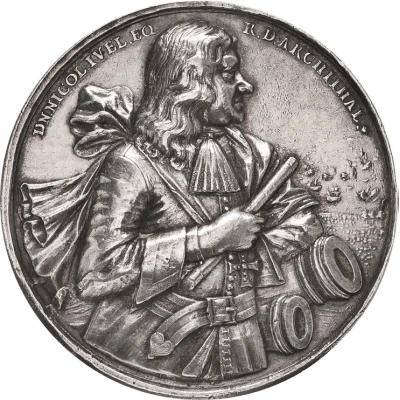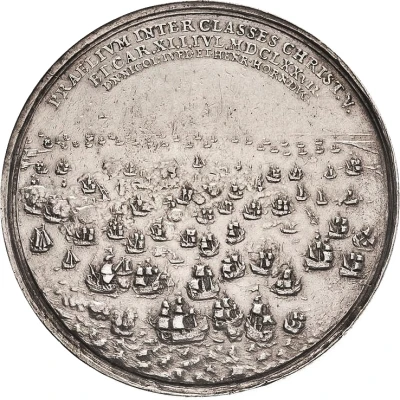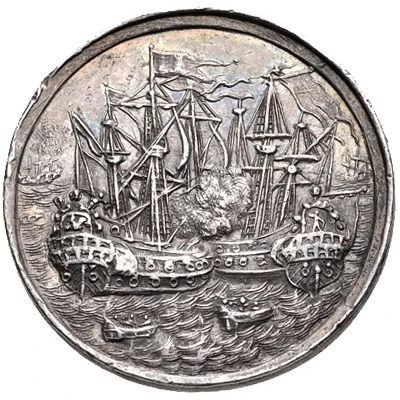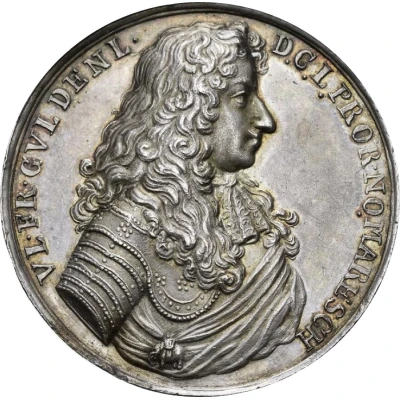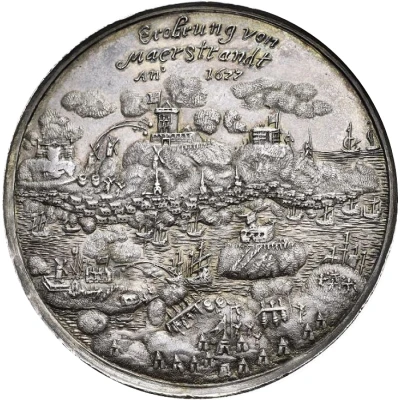Reverse
View of the confused battle scene with many ships (at least 100 took part in the battle), some sinking; amidst the waves of the sea at bottom, CS
Script: Latin
Lettering:
PRAELIVM INTER CLASSES CHRIST.V.
ET.CAR.XI.I.IVL.MDCLXXVII.
DN.NICOL.IVEL.ET.HENR.HORN.DVC.
Engraver: Christopher Schneider
Comment
This large and heavy medal was designed by Christofer Schneider, a medalist working in Copenhagen during the last quarter of the 17th century. He also produced a very much larger version of this medal, weighing 49 ounces (!), which is one of the biggest medals ever struck. The battle itself was between the combined Danish and Dutch fleets, under the general command of the famous Dutch admiral Cornelis Tromp, and the Swedish fleet under Baron Lorentz Creutz. On paper the Swedes had a much more powerful fleet: their flagship, the Stora Cronan(The Grand Crown), was at the time the largest warship in the world (126 guns and a compliment of 850 men). However, the Swedes were caught in a lee and when their flagship sought to turn, her open gun ports allowed the sea to enter and she capsized and then exploded when candles fell into the powder stores. By the end of the battle the Swedes were routed. It should be noted that while the medal gives the date 1 July 1677 for the battle, it actually took place on 1 June 1676! As for the Scanian War (1675-1679), it pitted Sweden and to some extent France against the combined forces of the Netherlands, Denmark and Brandenburg. The Swedes lost at sea and on land against the Brandenburgers, but defeated the Danish army. In the end the marriage of the Swedish king Charles XI to a Danish princess, and other complex negotiations, ended up ensuring that virtually nothing was changed by the war.
